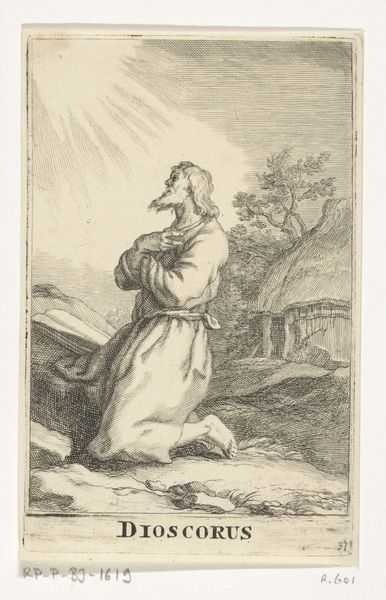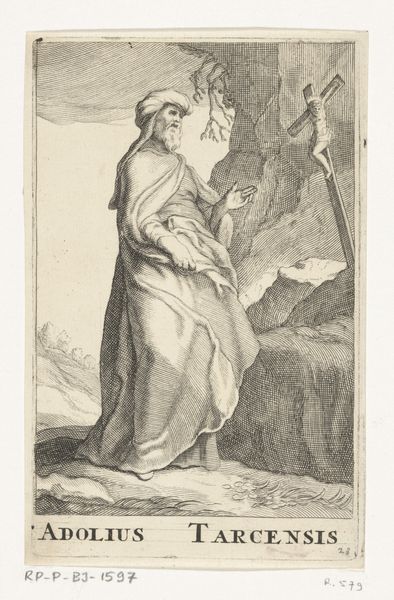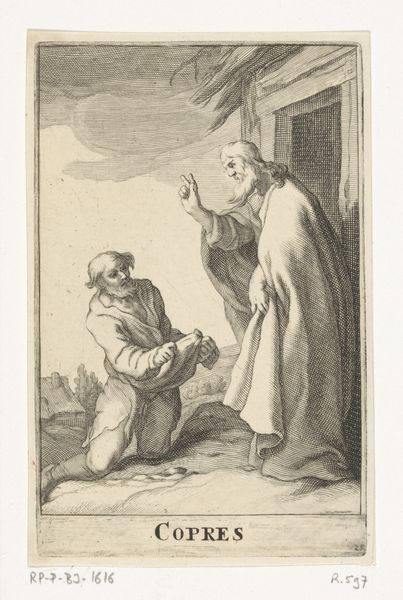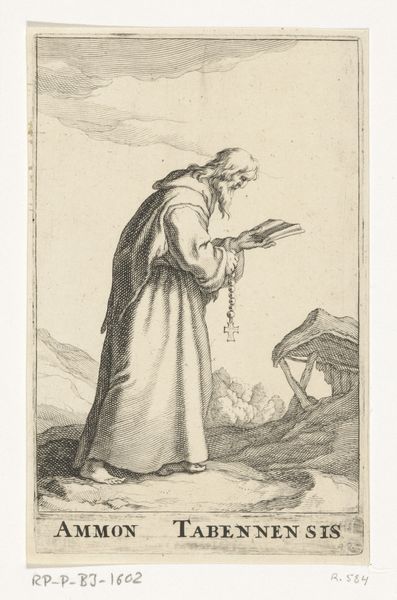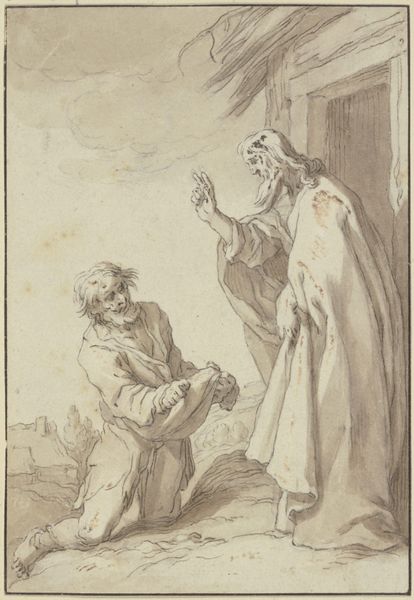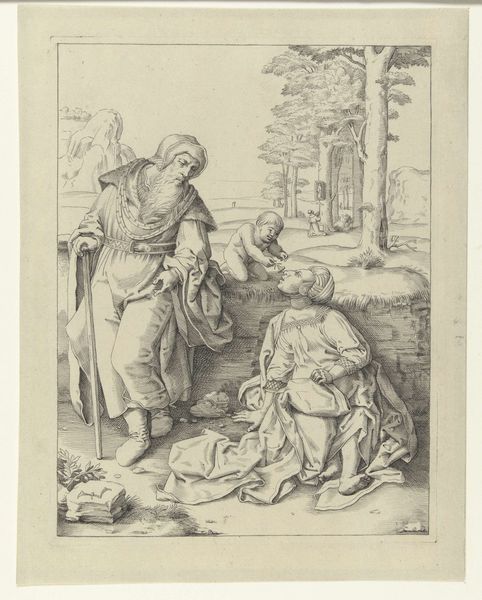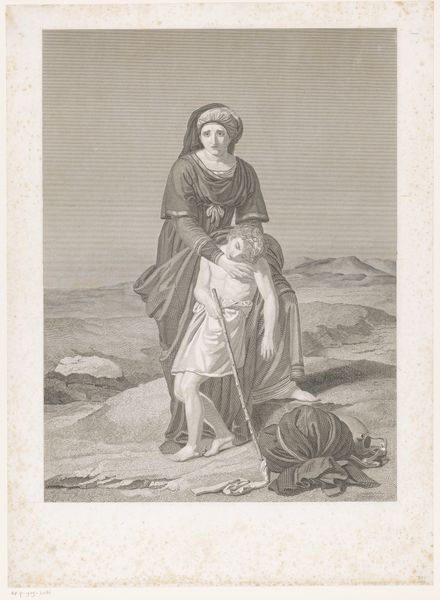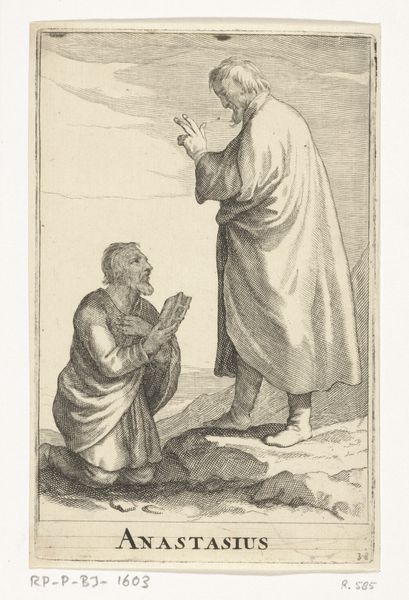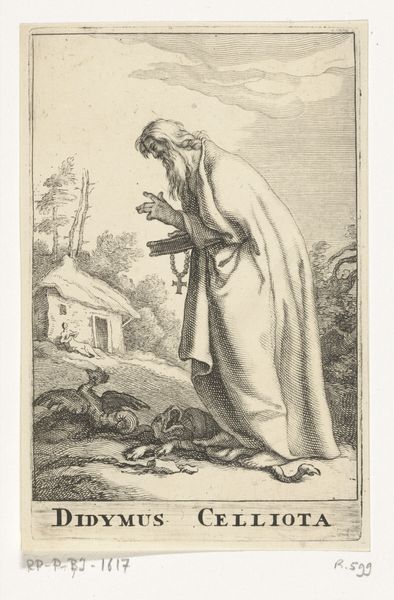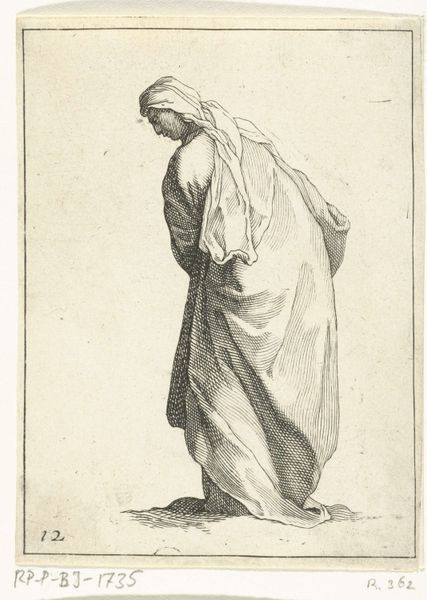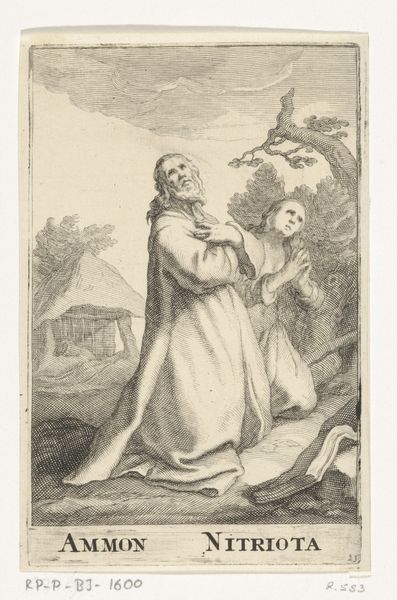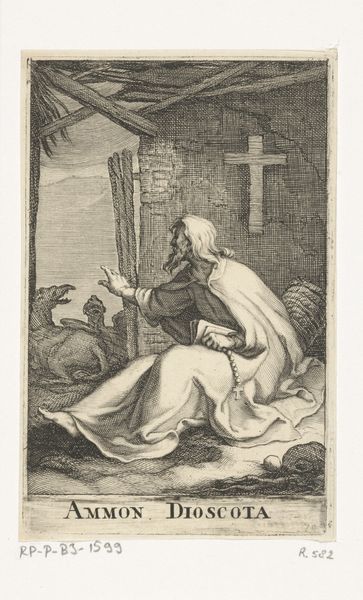
engraving
#
baroque
#
figuration
#
line
#
history-painting
#
northern-renaissance
#
engraving
Dimensions: height 135 mm, width 85 mm
Copyright: Rijks Museum: Open Domain
Curator: Welcome. We’re standing before "Heilige Benjamin van Nitria," or "Saint Benjamin of Nitria," an engraving by Frederick Bloemaert, created sometime after 1636. Editor: It strikes me immediately as quite stoic. The figure’s back is turned to us, obscuring any emotional display, which distances the viewer, creating a feeling of reverence maybe, or perhaps melancholy? Curator: Yes, the composition employs several intriguing techniques. Note how the clean, precise lines define the folds of the saint's robe and the subtle shading that gives depth to the landscape. Bloemaert really focuses on linearity to render form here. The engraver favors the abstract form. Editor: But it’s impossible to ignore the narrative implications, don't you think? Saint Benjamin of Nitria was known for his dedication to his faith amidst persecution. Positioning him with his back to the viewer – toward what awaits him in the background – seems powerfully symbolic. The historical realities and injustices make the viewing experience different, contextualizing what's been visually staged. Curator: The tension, however, between positive and negative space is carefully manipulated in terms of graphic representation to create tonal variation and contrast of figures, to represent an aesthetic understanding that stands on its own. Editor: While your focus brings to light important aspects of aesthetic design, let's consider the two smaller figures to the side of the saint—do they represent community, seeking counsel, support, refuge? Bloemaert’s artistic decisions engage both devotion and resilience in times of extreme social distress. We cannot divorce aesthetics from the society they reflect, right? Curator: Well, I'd like to gently point out the self-contained formal structures evident throughout. From the vantage point of aesthetic experience alone, what's communicated comes forward without context of historical suffering; rather there is visual pleasure and appreciation through artistic ability alone. Editor: Okay, but in considering Saint Benjamin’s posture—the averted gaze and the weighty robes, combined with his history—it sparks questions about how strength and defiance present during religious oppression, doesn't it? Curator: Perhaps. But the visual impact and refined articulation stand out even to modern audiences because, ultimately, we appreciate visual balance through design qualities like symmetry which remains potent irrespective of our personal context. Editor: Still, thinking about it all now – both form and that historical setting – brings greater understanding of the piece!
Comments
No comments
Be the first to comment and join the conversation on the ultimate creative platform.
